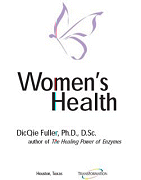HOME > ARCHIVES & ARTICLES ON ALTERNATIVE HEALERS > COMPANY BLOG > SUBSCRIBE
|
Dear Readers,
As we enjoy these cozy days of longest nights, we send our blessings into your life and the lives of our loved ones, so that it may expand with the steadily increasing light as it blossoms into Spring. May your days be productive and your nights restful. We look forward to offering you the best service we can imagine for you in the coming year, and offer the following retrospective of where we are in our lives today...
|
 We continue to carve out our niche here on Rebecca Lane, and have been grateful for an optimistic 2005. We continue to pray for global peace, prosperity and mutual respect amongst all peoples of the world in 2006.
We continue to carve out our niche here on Rebecca Lane, and have been grateful for an optimistic 2005. We continue to pray for global peace, prosperity and mutual respect amongst all peoples of the world in 2006.
|
 Nieces Madeline, age 11, Lydia, age 8, and nephew Max, age 6; Continue to grow and be a center of joyous focus of my heart. It is, however, a divided home between the mighty U of O Ducks and the Oregon State Beavers. But somehow they seem to always work it out. All the kiddies are active in soccer, which keeps their mommy busy behind the ever-needed cargo van with muddy shoes, stinky socks, and soccer balls.
Nieces Madeline, age 11, Lydia, age 8, and nephew Max, age 6; Continue to grow and be a center of joyous focus of my heart. It is, however, a divided home between the mighty U of O Ducks and the Oregon State Beavers. But somehow they seem to always work it out. All the kiddies are active in soccer, which keeps their mommy busy behind the ever-needed cargo van with muddy shoes, stinky socks, and soccer balls.
|
 Hamming it up on Halloween, 2005, Madeline as a budding rockstar diva--a role which seems to perfectly suit her, surrounded by her not-to-be-messed-with bodyguards, Courtney Hofstetter and Lydia Moeller.
Hamming it up on Halloween, 2005, Madeline as a budding rockstar diva--a role which seems to perfectly suit her, surrounded by her not-to-be-messed-with bodyguards, Courtney Hofstetter and Lydia Moeller.
|
 Madeline takes on the role of Mother Mary in the Christmas Story during her school's theatrical production. Madeline is seated to the left, uncharacteristically subdued and in solemn character...
Madeline takes on the role of Mother Mary in the Christmas Story during her school's theatrical production. Madeline is seated to the left, uncharacteristically subdued and in solemn character...
|
 Boyd, our ever-steady webmaster, writer and pal. We continue diligently our focus on energy medicine and vibrant living. When Boyd is not doing all of that, he's playing drums in his band, practicing his yoga, and being a cool and groovy guy...
Boyd, our ever-steady webmaster, writer and pal. We continue diligently our focus on energy medicine and vibrant living. When Boyd is not doing all of that, he's playing drums in his band, practicing his yoga, and being a cool and groovy guy...
|
 There's always a place at our table for our family and friends...
There's always a place at our table for our family and friends...
|
 ...And not a creature was stirring, not even a mouse.
...And not a creature was stirring, not even a mouse.
May your Christmas Season be filled with the wonder of all of life's possibilities. May your families have health, deep appreciation for one another, sincere regard for their fellow human beings, and gratitude for every moment. 
|
|
In vibrant health,


Shay Arave
President
Pure Energy Rx |
 FREE Women's Health booklet with any enzyme formula purchase (a $3.95 value - offer expires 1.30.06). This booklet is a definitive look at the relationship between digestive enzymes and hormones, and how hormonal imbalances in women can be traced back to enzyme deficiencies. A logical, no-nonsense evaluation of the current medical approaches that overlook enzymes as an ultimate solution. Dr. Fuller-Looney makes her case by showing that the symptoms of protein malabsorption are the same as the symptoms of menopause. Softbound booklet, 32 pages. EXCERPT: "Every woman should play an active role in her own balance. Hormone balance is an art. It is to be controlled or regulated by both her and her doctor."
FREE Women's Health booklet with any enzyme formula purchase (a $3.95 value - offer expires 1.30.06). This booklet is a definitive look at the relationship between digestive enzymes and hormones, and how hormonal imbalances in women can be traced back to enzyme deficiencies. A logical, no-nonsense evaluation of the current medical approaches that overlook enzymes as an ultimate solution. Dr. Fuller-Looney makes her case by showing that the symptoms of protein malabsorption are the same as the symptoms of menopause. Softbound booklet, 32 pages. EXCERPT: "Every woman should play an active role in her own balance. Hormone balance is an art. It is to be controlled or regulated by both her and her doctor."
Attracting optimum energy...
 People are living their dreams every day. What aspects of your life do you desire to transform or manifest? The New Year is rapidly approaching. Now more than ever as the joys and pressures of the holidays envelop us, how we begin thinking about the year ahead while we fully enjoy the revelry of the present, will greatly affect what we create in the coming year. It's also a powerful time to reflect on the past year. The transition between the celebrations during November/December and the serious back to work ethic of January can be exciting if you are clear about what you intend to create. >>> MORE
People are living their dreams every day. What aspects of your life do you desire to transform or manifest? The New Year is rapidly approaching. Now more than ever as the joys and pressures of the holidays envelop us, how we begin thinking about the year ahead while we fully enjoy the revelry of the present, will greatly affect what we create in the coming year. It's also a powerful time to reflect on the past year. The transition between the celebrations during November/December and the serious back to work ethic of January can be exciting if you are clear about what you intend to create. >>> MORE
More messages from water...
 Reiko Myamoto Dewey interviews water researcher, Dr. Masaru Emoto, who has confounded the scientific world with his demonstrations that water physically changes its crystalline structure in the presence of words and intentions. His fasincating work was originally published in Messages from Water from 1999. Here, Dr. Emoto explains his further research since that book. He notes, "In one of our experiments, we had some water on a table, and 17 participants all stood in a circle around a table holding hands. Then each of the participants spoke a beautiful word of their choice to the water. Words like unity, love, and friendship. We took before-and-after shots and were able to obtain some beautiful crystalline structures as a result of this." >>> MORE
Reiko Myamoto Dewey interviews water researcher, Dr. Masaru Emoto, who has confounded the scientific world with his demonstrations that water physically changes its crystalline structure in the presence of words and intentions. His fasincating work was originally published in Messages from Water from 1999. Here, Dr. Emoto explains his further research since that book. He notes, "In one of our experiments, we had some water on a table, and 17 participants all stood in a circle around a table holding hands. Then each of the participants spoke a beautiful word of their choice to the water. Words like unity, love, and friendship. We took before-and-after shots and were able to obtain some beautiful crystalline structures as a result of this." >>> MORE
|
F.Y.I. - Interesting Health News Tidbits
|
Placebo effect, or something else?...

 (AP) WASHINGTON - Your medicine really could work better if your doctor talks it up before handing over the prescription. Research is showing the power of expectations, that they have physical--not just psychological--effects on your health. Scientists can measure the resulting changes in the brain, from the release of natural painkilling chemicals to alterations in how neurons fire. Among the most provocative findings: New research suggests that once Alzheimer's disease robs someone of the ability to expect that a proven painkiller will help them, it doesn't work nearly as well. It's a new spin on the so called placebo effect--and it begs the question of how to harness this power and thus enhance treatment benefits for patients. (AP) WASHINGTON - Your medicine really could work better if your doctor talks it up before handing over the prescription. Research is showing the power of expectations, that they have physical--not just psychological--effects on your health. Scientists can measure the resulting changes in the brain, from the release of natural painkilling chemicals to alterations in how neurons fire. Among the most provocative findings: New research suggests that once Alzheimer's disease robs someone of the ability to expect that a proven painkiller will help them, it doesn't work nearly as well. It's a new spin on the so called placebo effect--and it begs the question of how to harness this power and thus enhance treatment benefits for patients.
 "Your expectations can have profound impacts on your brain and your health," says Columbia University neuroscientist Tor Wager. "There is not a single placebo effect, but many placebo effects," that differ by illness, adds Dr. Fabrizio Benedetti of Italy's University of Torino Medical School, who is studying those effects in patients with Alzheimer's, Parkinson's disease and pain. The placebo effect is infamous from studies of new medications: Scientists often given either an experimental drug or a dummy pill to patients and see how they fare. Frequently, those taking the fake feel better, too, for a while, making it more difficult to tease out the medication's true effects. Doctors have long thought the placebo effect was psychological. Now scientists are amassing the first direct evidence that the placebo effect actually is physical, and that expecting benefit can trigger the same neurological pathways of healing as real medication does. Among them: University of Michigan scientists injected the jaws of healthy young men with salt water to cause painful pressure, while PET scans measured the impact in their brains. During one scan, the men were told they were getting a pain reliever, actually a placebo. Their brains immediately released more endorphins--chemicals that act as natural painkillers by blocking the transmission of pain signals between nerve cells--and the men felt better. To return to pre-placebo pain levels, scientists had to increase the salt-water pressure. [MORE] "Your expectations can have profound impacts on your brain and your health," says Columbia University neuroscientist Tor Wager. "There is not a single placebo effect, but many placebo effects," that differ by illness, adds Dr. Fabrizio Benedetti of Italy's University of Torino Medical School, who is studying those effects in patients with Alzheimer's, Parkinson's disease and pain. The placebo effect is infamous from studies of new medications: Scientists often given either an experimental drug or a dummy pill to patients and see how they fare. Frequently, those taking the fake feel better, too, for a while, making it more difficult to tease out the medication's true effects. Doctors have long thought the placebo effect was psychological. Now scientists are amassing the first direct evidence that the placebo effect actually is physical, and that expecting benefit can trigger the same neurological pathways of healing as real medication does. Among them: University of Michigan scientists injected the jaws of healthy young men with salt water to cause painful pressure, while PET scans measured the impact in their brains. During one scan, the men were told they were getting a pain reliever, actually a placebo. Their brains immediately released more endorphins--chemicals that act as natural painkillers by blocking the transmission of pain signals between nerve cells--and the men felt better. To return to pre-placebo pain levels, scientists had to increase the salt-water pressure. [MORE]
Alzheimer's linked to diabetes...

 Researchers at Rhode Island Hospital and Brown Medical School have discovered that insulin and its receptors drop significantly in the brain during the early stages of Alzheimer's disease, and that levels decline progressively as the disease becomes more severe, leading to further evidence that Alzheimer's is a new type of diabetes. They also found that acetylcholine deficiency, a hallmark of the disease, is linked directly to the loss of insulin and insulin-like growth factor function in the brain. The study, published in the November issue of the Journal of Alzheimer's Disease, is the first to look at insulin levels early in the course of the disease. The authors' previous work published earlier this year primarily focused on the late stages of Alzheimer's. Researchers at Rhode Island Hospital and Brown Medical School have discovered that insulin and its receptors drop significantly in the brain during the early stages of Alzheimer's disease, and that levels decline progressively as the disease becomes more severe, leading to further evidence that Alzheimer's is a new type of diabetes. They also found that acetylcholine deficiency, a hallmark of the disease, is linked directly to the loss of insulin and insulin-like growth factor function in the brain. The study, published in the November issue of the Journal of Alzheimer's Disease, is the first to look at insulin levels early in the course of the disease. The authors' previous work published earlier this year primarily focused on the late stages of Alzheimer's.
 "Insulin disappears early and dramatically in Alzheimer's disease. And many of the unexplained features of Alzheimer's, such as cell death and tangles in the brain, appear to be linked to abnormalities in insulin signaling. This demonstrates that the disease is most likely a neuroendocrine disorder, or another type of diabetes," says senior author Suzanne M. de la Monte, a neuropathologist at Rhode Island Hospital and a professor of pathology at Brown Medical School in Providence, RI. The study analyzed postmortem brain tissue of 45 patients with a diagnosis of either normal aging or different degrees of Alzheimer's neurodegeneration, termed "Braak Stages." "Insulin disappears early and dramatically in Alzheimer's disease. And many of the unexplained features of Alzheimer's, such as cell death and tangles in the brain, appear to be linked to abnormalities in insulin signaling. This demonstrates that the disease is most likely a neuroendocrine disorder, or another type of diabetes," says senior author Suzanne M. de la Monte, a neuropathologist at Rhode Island Hospital and a professor of pathology at Brown Medical School in Providence, RI. The study analyzed postmortem brain tissue of 45 patients with a diagnosis of either normal aging or different degrees of Alzheimer's neurodegeneration, termed "Braak Stages."
 Researchers analyzed insulin and insulin receptor function in the frontal cortex, a major area affected by Alzheimer's. They found that with increasing severity of the disease, levels of insulin receptors and the brain's ability to respond to insulin decreased markedly. "In the most advanced stage of Alzheimer's, insulin receptors were nearly 80 percent lower than in a normal brain," de la Monte says. They surmised that Alzheimer's is a complex neuroendocrine disease that originates in the central nervous system, raising the possibility of a new type of diabetes. [MORE] Researchers analyzed insulin and insulin receptor function in the frontal cortex, a major area affected by Alzheimer's. They found that with increasing severity of the disease, levels of insulin receptors and the brain's ability to respond to insulin decreased markedly. "In the most advanced stage of Alzheimer's, insulin receptors were nearly 80 percent lower than in a normal brain," de la Monte says. They surmised that Alzheimer's is a complex neuroendocrine disease that originates in the central nervous system, raising the possibility of a new type of diabetes. [MORE]
Molecule of love...

 (Reuters) ROME - Your heartbeat accelerates, you have butterflies in the stomach, you feel euphoric and a bit silly. It's all part of falling passionately in love -- and scientists now tell us the feeling won't last more than a year. The powerful emotions that bowl over new lovers are triggered by a molecule known as nerve growth factor (NGF), according to Pavia University researchers. The Italian scientists found far higher levels of NGF in the blood of 58 people who had recently fallen madly in love than in that of a group of singles and people in long-term relationships. But after a year with the same lover, the quantity of the 'love molecule' in their blood had fallen to the same level as that of the other groups. The Italian researchers, publishing their study in the journal Psychoneuroendocrinology, said it was not clear how falling in love triggers higher levels of NGF, but the molecule clearly has an important role in the "social chemistry" between people at the start of a relationship.
(Reuters) ROME - Your heartbeat accelerates, you have butterflies in the stomach, you feel euphoric and a bit silly. It's all part of falling passionately in love -- and scientists now tell us the feeling won't last more than a year. The powerful emotions that bowl over new lovers are triggered by a molecule known as nerve growth factor (NGF), according to Pavia University researchers. The Italian scientists found far higher levels of NGF in the blood of 58 people who had recently fallen madly in love than in that of a group of singles and people in long-term relationships. But after a year with the same lover, the quantity of the 'love molecule' in their blood had fallen to the same level as that of the other groups. The Italian researchers, publishing their study in the journal Psychoneuroendocrinology, said it was not clear how falling in love triggers higher levels of NGF, but the molecule clearly has an important role in the "social chemistry" between people at the start of a relationship.
More mercury, more autism...

 A growing number of professionals in the health care field are reporting that a relationship exists between the epidemic in neurodevelopmental disorders of autism, attention deficit hyperactive disorder, and speech or language delay all across the country, and the use of thimerosal, the mercury-based preservative used in childhood vaccines. Vaccines are the only medicines that Americans are mandated to receive as a condition for attendance in school and day care, and for some types of employment. Parents who receive federal assistance are also required to show proof that their children have been vaccinated. While the mandate for which vaccines must be included on the vaccine schedule is a state mandate, it is the Centers for Disease Control and Prevention (CDC) and its Advisory Committee that make the recommendations to which the majority of states adhere when determining mandates. A growing number of professionals in the health care field are reporting that a relationship exists between the epidemic in neurodevelopmental disorders of autism, attention deficit hyperactive disorder, and speech or language delay all across the country, and the use of thimerosal, the mercury-based preservative used in childhood vaccines. Vaccines are the only medicines that Americans are mandated to receive as a condition for attendance in school and day care, and for some types of employment. Parents who receive federal assistance are also required to show proof that their children have been vaccinated. While the mandate for which vaccines must be included on the vaccine schedule is a state mandate, it is the Centers for Disease Control and Prevention (CDC) and its Advisory Committee that make the recommendations to which the majority of states adhere when determining mandates.
 The current epidemic actually began in the late 1980s when a large number of new vaccines were added to the schedule. The blame is at least partially attributable to the failure of government officials to keep track of the cumulative amounts of mercury as they added triple-dose-vaccines to the schedule, thus the amount of thimerosal was subsequently tripled. Each new vaccine contained 25 micrograms of mercury, and according to Professor Lynn Adams, of Radford University, who specializes in autism, by 1999, a study determined that the average child received 33 doses of 10 different vaccines by the age 5. The current epidemic actually began in the late 1980s when a large number of new vaccines were added to the schedule. The blame is at least partially attributable to the failure of government officials to keep track of the cumulative amounts of mercury as they added triple-dose-vaccines to the schedule, thus the amount of thimerosal was subsequently tripled. Each new vaccine contained 25 micrograms of mercury, and according to Professor Lynn Adams, of Radford University, who specializes in autism, by 1999, a study determined that the average child received 33 doses of 10 different vaccines by the age 5.
 Elected lawmakers first became aware of the problem in 1999, when the House Committee on Government Reform initiated an investigation into the dangers of mercury exposure. An alarm rang early about the exposure of children to thimerosal. By October 25, 2000, Committee Chairman, Dan Burton (R-IN), was trying to get the substance out of vaccines as quickly as possible, sending a letter to the Department of Health and Human Services asking the director to get the FDA to recall all vaccines with thimerosal. "We all know and accept that mercury is a neurotoxin, and yet the FDA has failed to recall the 50 vaccines that contain Thimerosal," Burton wrote. "Every day that mercury-containing vaccines remain on the market is another day HHS is putting 8,000 children at risk," he said. [MORE] Elected lawmakers first became aware of the problem in 1999, when the House Committee on Government Reform initiated an investigation into the dangers of mercury exposure. An alarm rang early about the exposure of children to thimerosal. By October 25, 2000, Committee Chairman, Dan Burton (R-IN), was trying to get the substance out of vaccines as quickly as possible, sending a letter to the Department of Health and Human Services asking the director to get the FDA to recall all vaccines with thimerosal. "We all know and accept that mercury is a neurotoxin, and yet the FDA has failed to recall the 50 vaccines that contain Thimerosal," Burton wrote. "Every day that mercury-containing vaccines remain on the market is another day HHS is putting 8,000 children at risk," he said. [MORE]
Buddha boy...

 (BBC) KATHMANDU - Authorities in Nepal urged religious groups and scientists on Sunday to help solve the mystery of a meditating teenaged boy who some believe is an incarnation of Buddha. At least 100,000 devotees from Nepal and neighboring India have flocked in recent weeks to a dense forest in southeastern Nepal to see 15-year-old Ram Bahadur Bamjon, who, his associates say, has been meditating without food or water for six months. (BBC) KATHMANDU - Authorities in Nepal urged religious groups and scientists on Sunday to help solve the mystery of a meditating teenaged boy who some believe is an incarnation of Buddha. At least 100,000 devotees from Nepal and neighboring India have flocked in recent weeks to a dense forest in southeastern Nepal to see 15-year-old Ram Bahadur Bamjon, who, his associates say, has been meditating without food or water for six months.
 Shanta Raj Subedi, district administrator of Bara, 150km southeast of Kathmandu and where the boy is meditating, said he had requested the Lumbini Development Trust, a Buddhist panel, and the Royal Nepal Academy of Science and Technology to get to the bottom of the mystery. "We want to investigate claims that the boy has survived for so long without food or drink," Subedi said. Bamjon sits cross-legged beneath a "pipal" tree, which is sacred to Hindus, with his eyes closed in meditation. Shanta Raj Subedi, district administrator of Bara, 150km southeast of Kathmandu and where the boy is meditating, said he had requested the Lumbini Development Trust, a Buddhist panel, and the Royal Nepal Academy of Science and Technology to get to the bottom of the mystery. "We want to investigate claims that the boy has survived for so long without food or drink," Subedi said. Bamjon sits cross-legged beneath a "pipal" tree, which is sacred to Hindus, with his eyes closed in meditation.
 He does not speak and followers are only allowed to see him from a distance of 50 meters. The young mystic is hidden from public view at night behind a curtain drawn by his followers. Doctors observing from a distance have said the boy is breathing normally but is weak. Local journalist Govinda Devkota, who has visited the site, said the boy sits with a shawl across his chest from armpit to shoulder, in the same posture as Buddha is shown in pictures. He does not speak and followers are only allowed to see him from a distance of 50 meters. The young mystic is hidden from public view at night behind a curtain drawn by his followers. Doctors observing from a distance have said the boy is breathing normally but is weak. Local journalist Govinda Devkota, who has visited the site, said the boy sits with a shawl across his chest from armpit to shoulder, in the same posture as Buddha is shown in pictures.
 The number of visitors had reached up to 10,000 a day, but fewer people are going to the retreat now. "He sits motionless from dawn to dusk when visitors are allowed to see him. This demands something," said Devkota. "But whether he is an incarnation of Buddha, I have doubts because we don't know what he does at night. This must be investigated." His mother, Maya Devi--the same name as that of Buddha's mother--said Bamjon, the third of her seven children, is a quiet boy who kept aloof from friends. "Initially, I was worried about him. But now I am happy. He is in devotion to Buddha," Devi said. Buddha, who founded Buddhism, was born a prince in Lumbini, a dusty village in Nepal's rice growing plains about 350km west of the capital Kathmandu, over 2,600 years ago. He attained enlightenment at Bodh Gaya in the eastern Indian state of Bihar that borders Nepal. [MORE] The number of visitors had reached up to 10,000 a day, but fewer people are going to the retreat now. "He sits motionless from dawn to dusk when visitors are allowed to see him. This demands something," said Devkota. "But whether he is an incarnation of Buddha, I have doubts because we don't know what he does at night. This must be investigated." His mother, Maya Devi--the same name as that of Buddha's mother--said Bamjon, the third of her seven children, is a quiet boy who kept aloof from friends. "Initially, I was worried about him. But now I am happy. He is in devotion to Buddha," Devi said. Buddha, who founded Buddhism, was born a prince in Lumbini, a dusty village in Nepal's rice growing plains about 350km west of the capital Kathmandu, over 2,600 years ago. He attained enlightenment at Bodh Gaya in the eastern Indian state of Bihar that borders Nepal. [MORE]
It ain't Splenda...

 Ventana Health, Inc. today announced the launch of Zsweet®-- a new, all natural, zero-calorie sweetener approved by the FDA. Zsweet® is an all-natural sweetener that provides a safer alternative to chemical sugar substitutes. Zsweet® flows, measures, and tastes like sugar without the unpleasant aftertaste. Zsweet® has been favorably mentioned in the New York Times best selling book, The Perricone Weight-Loss Diet, by Nicholas Perricone, M.D. According to Dr. Perricone, artificial sweeteners and hidden sugars, such as fructose corn syrup commonly found in beverages, are causing a host of serious health problems including obesity. Ventana Health, Inc. today announced the launch of Zsweet®-- a new, all natural, zero-calorie sweetener approved by the FDA. Zsweet® is an all-natural sweetener that provides a safer alternative to chemical sugar substitutes. Zsweet® flows, measures, and tastes like sugar without the unpleasant aftertaste. Zsweet® has been favorably mentioned in the New York Times best selling book, The Perricone Weight-Loss Diet, by Nicholas Perricone, M.D. According to Dr. Perricone, artificial sweeteners and hidden sugars, such as fructose corn syrup commonly found in beverages, are causing a host of serious health problems including obesity.
 "Zsweet® was developed to enhance the healthy and balanced lifestyle of our community with a nutritious product of the highest integrity and quality without sacrificing taste," says Tim Avila, creator of Zsweet® and chief executive officer of Ventana Health Inc. "Zsweet® was developed to enhance the healthy and balanced lifestyle of our community with a nutritious product of the highest integrity and quality without sacrificing taste," says Tim Avila, creator of Zsweet® and chief executive officer of Ventana Health Inc.
 "Our goal was to produce a sweetener that was sweet in taste and good for the body," explains Avila. Zsweet® is made with a blend of Erythritol, a natural sugar alcohol, and food extracts commonly found in fruits and vegetables. Zsweet® does not use herbal extracts or dietary supplements and does not chemically alter any ingredients. "Our goal was to produce a sweetener that was sweet in taste and good for the body," explains Avila. Zsweet® is made with a blend of Erythritol, a natural sugar alcohol, and food extracts commonly found in fruits and vegetables. Zsweet® does not use herbal extracts or dietary supplements and does not chemically alter any ingredients.
 Benefits from Zsweet® are numerous especially since Erythritol has been shown not to increase blood sugar levels and is healthy for diabetics. Tests have shown that the basic ingredient in Zsweet® has the highest level of digestibility and tolerability of the sugar alcohols. Studies have also revealed that Erythritol prevents dental cavities. Benefits from Zsweet® are numerous especially since Erythritol has been shown not to increase blood sugar levels and is healthy for diabetics. Tests have shown that the basic ingredient in Zsweet® has the highest level of digestibility and tolerability of the sugar alcohols. Studies have also revealed that Erythritol prevents dental cavities.
 "Unlike other sugar substitutes such as Splenda®, Equal® and Sweet 'n' Low®, Zsweet® uses no caloric or carbohydrate fillers," says Avila. "Zsweet® does not contain any chemically altered materials, not even in trace amounts." Zsweet® can be used like sugar in equivalent measurements in hot or cold beverages, blended drinks, over cereal, and in a wide variety of recipes. Zsweet® will be available online January 2006 and will have distribution throughout the US. [COMPANY] [TECHNICAL INFO] "Unlike other sugar substitutes such as Splenda®, Equal® and Sweet 'n' Low®, Zsweet® uses no caloric or carbohydrate fillers," says Avila. "Zsweet® does not contain any chemically altered materials, not even in trace amounts." Zsweet® can be used like sugar in equivalent measurements in hot or cold beverages, blended drinks, over cereal, and in a wide variety of recipes. Zsweet® will be available online January 2006 and will have distribution throughout the US. [COMPANY] [TECHNICAL INFO]
B-Vitamins so you won't forget...

 As we've seen in previous studies, elevated levels of the amino acid homocysteine have been linked with Alzheimer's disease and dementia. Considerable research has also demonstrated that foods and supplements rich in vitamins B6, B12, and folic acid help reduce homocysteine levels. So, could these vitamins be effective in preventing AD? Researchers from the Jean Mayer USDA Human Nutrition Research Center on Aging at Tufts University recruited more than 320 healthy older men from a Veterans Affairs study on aging. At baseline, all of the men completed food-frequency questionnaires, and blood was drawn from each subject to measure B vitamins and homocysteine. Over the following three years the men took occasional tests to monitor cognitive function. As we've seen in previous studies, elevated levels of the amino acid homocysteine have been linked with Alzheimer's disease and dementia. Considerable research has also demonstrated that foods and supplements rich in vitamins B6, B12, and folic acid help reduce homocysteine levels. So, could these vitamins be effective in preventing AD? Researchers from the Jean Mayer USDA Human Nutrition Research Center on Aging at Tufts University recruited more than 320 healthy older men from a Veterans Affairs study on aging. At baseline, all of the men completed food-frequency questionnaires, and blood was drawn from each subject to measure B vitamins and homocysteine. Over the following three years the men took occasional tests to monitor cognitive function.
 At the conclusion of the study, researchers found an association between high levels of homocysteine and a decline in recall memory. High levels of folate were significantly linked to verbal fluency. Men with elevated folate levels also had less decline in spatial copying; a drawing test that measures the brain's ability to understand and reproduce geometric figures. Writing in the American Journal of Clinical Nutrition, the USDA authors concluded that, "Low B vitamin and high homocysteine concentrations predict cognitive decline." Vitamins B6, B12, and folate have been proven to help metabolize homocysteine. These nutrients are abundant in asparagus, lentils, chickpeas, most varieties of beans, and especially spinach and other leafy green vegetables. But many people don't absorb B vitamins well, so in addition to these food sources a good B-complex supplement is often required to lower homocysteine levels. At the conclusion of the study, researchers found an association between high levels of homocysteine and a decline in recall memory. High levels of folate were significantly linked to verbal fluency. Men with elevated folate levels also had less decline in spatial copying; a drawing test that measures the brain's ability to understand and reproduce geometric figures. Writing in the American Journal of Clinical Nutrition, the USDA authors concluded that, "Low B vitamin and high homocysteine concentrations predict cognitive decline." Vitamins B6, B12, and folate have been proven to help metabolize homocysteine. These nutrients are abundant in asparagus, lentils, chickpeas, most varieties of beans, and especially spinach and other leafy green vegetables. But many people don't absorb B vitamins well, so in addition to these food sources a good B-complex supplement is often required to lower homocysteine levels.

Fuel cell house...

 OSAKA, JAPAN - Panasonic has announced the completion of the Eco & UD (universal design) House, a life-size model house that embodies the company's commitment to ecology and the principles of universal design. Located within the complex of Panasonic Center Tokyo, it will be open to the public on January 4, 2006 for visitors to experience innovative and futuristic living in the context of a typical home setting. The House is built and filled with Panasonic's products, technologies and ideas, offering total home solutions for comfortable living and a new lifestyle in an ecologically sound environment.
OSAKA, JAPAN - Panasonic has announced the completion of the Eco & UD (universal design) House, a life-size model house that embodies the company's commitment to ecology and the principles of universal design. Located within the complex of Panasonic Center Tokyo, it will be open to the public on January 4, 2006 for visitors to experience innovative and futuristic living in the context of a typical home setting. The House is built and filled with Panasonic's products, technologies and ideas, offering total home solutions for comfortable living and a new lifestyle in an ecologically sound environment.
 For example, the House employs fuel-cell co generation and solar power generation systems. To increase energy efficiency and reduce the warming effect of the urban heat islands, it is topped with a green roof. Panasonic is addressing global warming issues both at factory and product levels. To accelerate reductions in household greenhouse gas (GHG) emission of its products, the company has adopted an indicator, "Factor X," to assess the level of impact the products have on the global warming during their lifetime. For example, the House employs fuel-cell co generation and solar power generation systems. To increase energy efficiency and reduce the warming effect of the urban heat islands, it is topped with a green roof. Panasonic is addressing global warming issues both at factory and product levels. To accelerate reductions in household greenhouse gas (GHG) emission of its products, the company has adopted an indicator, "Factor X," to assess the level of impact the products have on the global warming during their lifetime.
 The House has already achieved a Factor 5 rating Panasonic set for the year 2010 with advanced, energy efficient products. They include a self-cleaning air conditioner, a hydro-fluorocarbon free refrigerator, a dish washer and a tilted-drum washer and dryer which clean with significantly less amount of water and long-life LED lighting devices which virtually do not need to be replaced. The House has already achieved a Factor 5 rating Panasonic set for the year 2010 with advanced, energy efficient products. They include a self-cleaning air conditioner, a hydro-fluorocarbon free refrigerator, a dish washer and a tilted-drum washer and dryer which clean with significantly less amount of water and long-life LED lighting devices which virtually do not need to be replaced. 
All these products have adopted the universal design concept. Panasonic is using its expertise and ingenuity to develop products that are easy and safe for all people to use. For instance, Panasonic conducted scientific studies to understand vision impairment caused by cataracts and developed a goggle to simulate the condition. Using the goggle, the company has developed a design guideline detailing colors, contrast, type size and other factors to enhance its products for the visually impaired. Furthermore, Panasonic equipped some products with voice guidance for easy operation of sophisticated digital devices. The House incorporates the company's efforts towards UD in an everyday living environment. [MORE]

Eating meat mindfully...

 Living in the Rocky Mountain West, I am used to breathtaking views. None takes my breath away as much as a 150,000-cow feedlot in southern Idaho. Even before I see it from the road, its stench overpowers me. Then I crest the hill and cattle in bleak pens sprawl to the horizon. Living in the Rocky Mountain West, I am used to breathtaking views. None takes my breath away as much as a 150,000-cow feedlot in southern Idaho. Even before I see it from the road, its stench overpowers me. Then I crest the hill and cattle in bleak pens sprawl to the horizon.
 It is a depressing sight, and I feel horrified at a food system that can allow animals -- living beings -- to be raised in such a manner. It is a depressing sight, and I feel horrified at a food system that can allow animals -- living beings -- to be raised in such a manner.
 I see the products of this food system every time I visit the supermarket: rows of fatty, hormone-injected, often colorless meat -- straight from a factory, not a farm. I'll pass. I see the products of this food system every time I visit the supermarket: rows of fatty, hormone-injected, often colorless meat -- straight from a factory, not a farm. I'll pass.
 But I do eat meat. But I do eat meat.
 This isn't hypocritical. I buy my meat from farmers and ranchers committed to raising animals in humane and healthful ways -- steaks from grass-fed cattle, roasted free-range chicken, elk chili, lamb chorizo, smoked duck -- and so celebrate the lands and the animals of my Idaho home. [MORE] This isn't hypocritical. I buy my meat from farmers and ranchers committed to raising animals in humane and healthful ways -- steaks from grass-fed cattle, roasted free-range chicken, elk chili, lamb chorizo, smoked duck -- and so celebrate the lands and the animals of my Idaho home. [MORE]
|